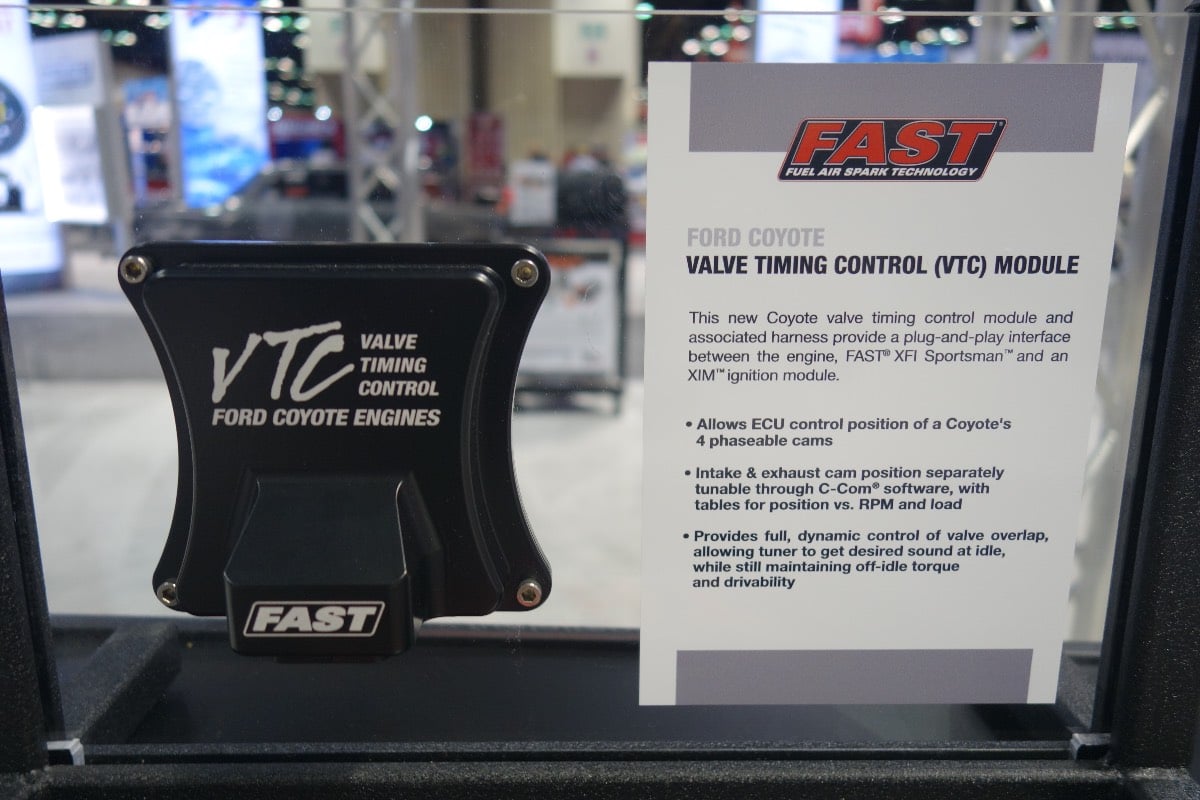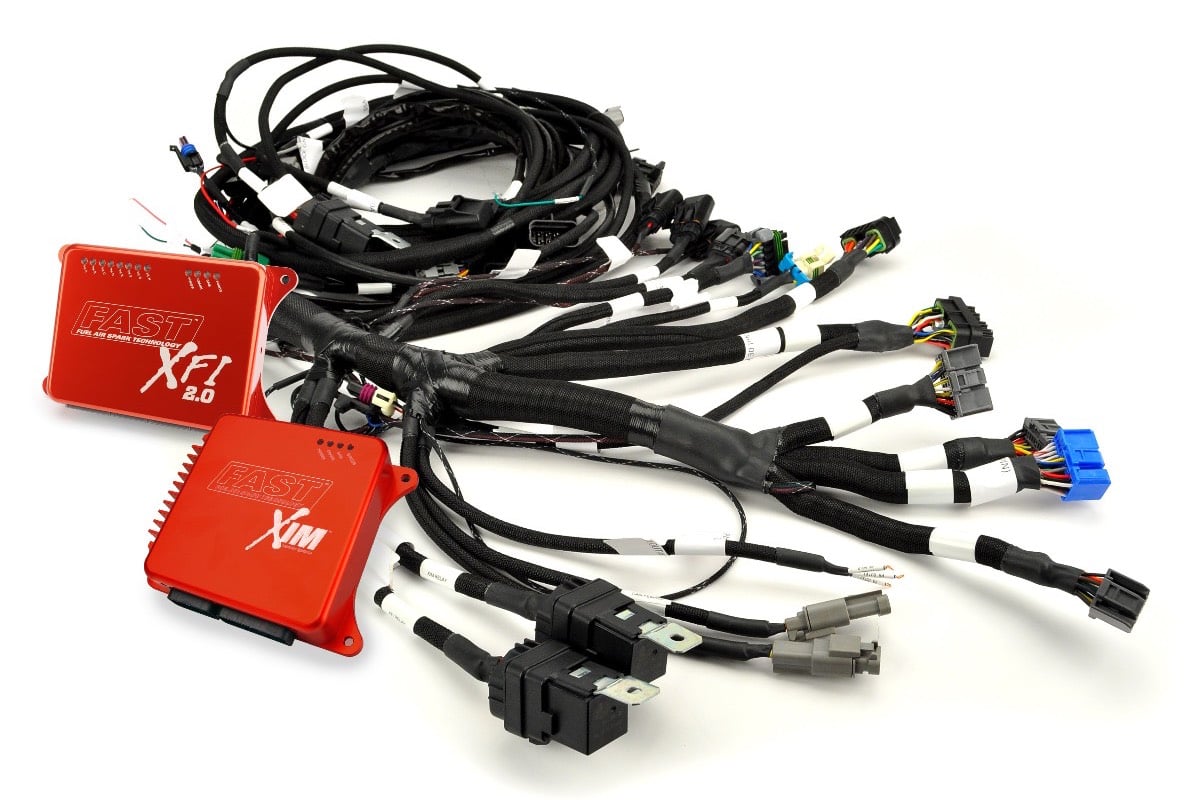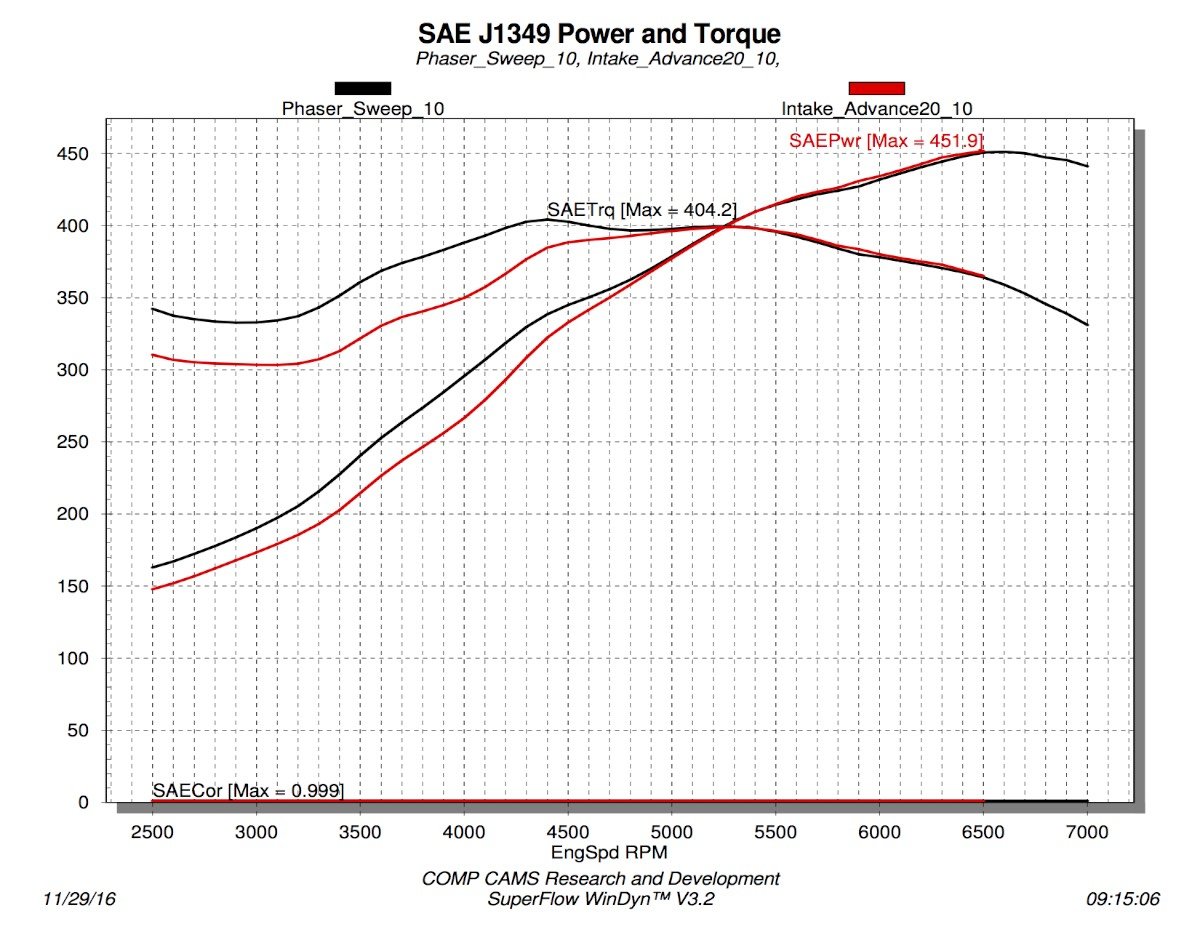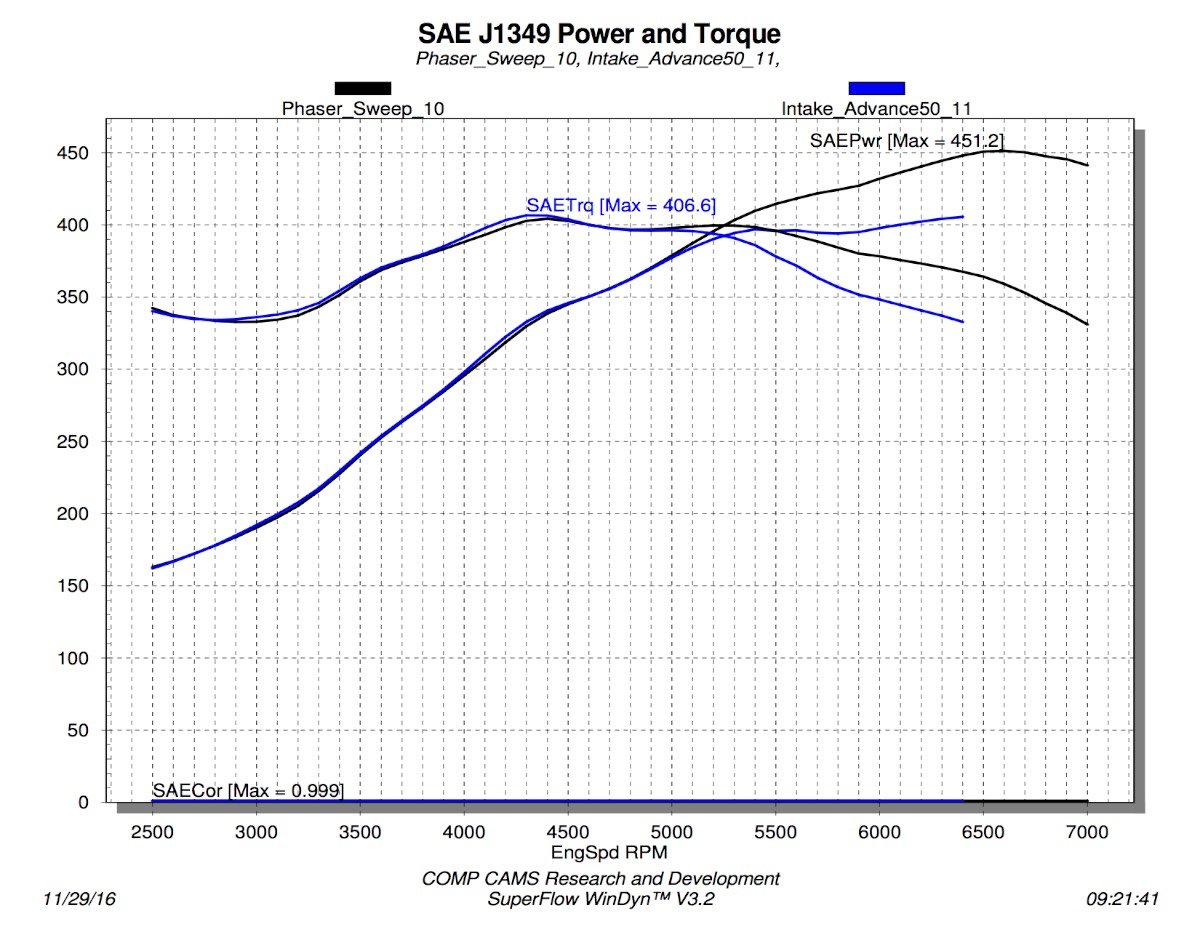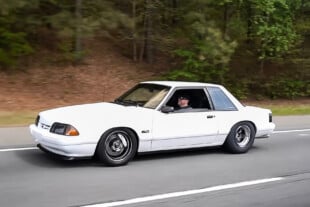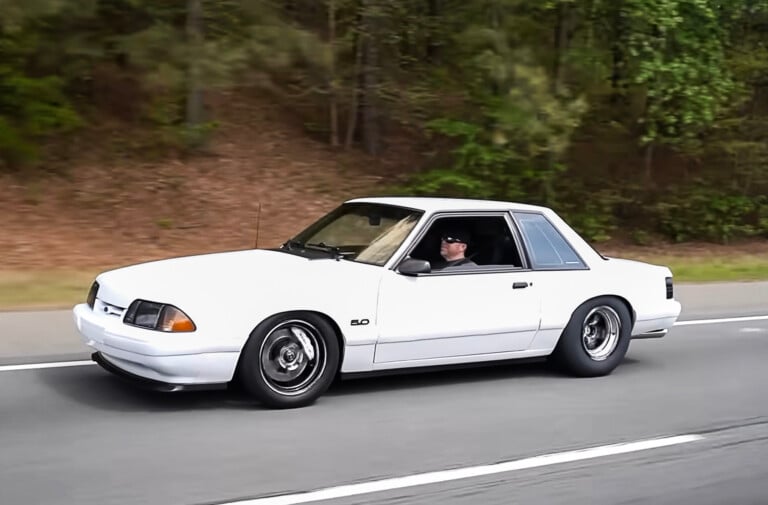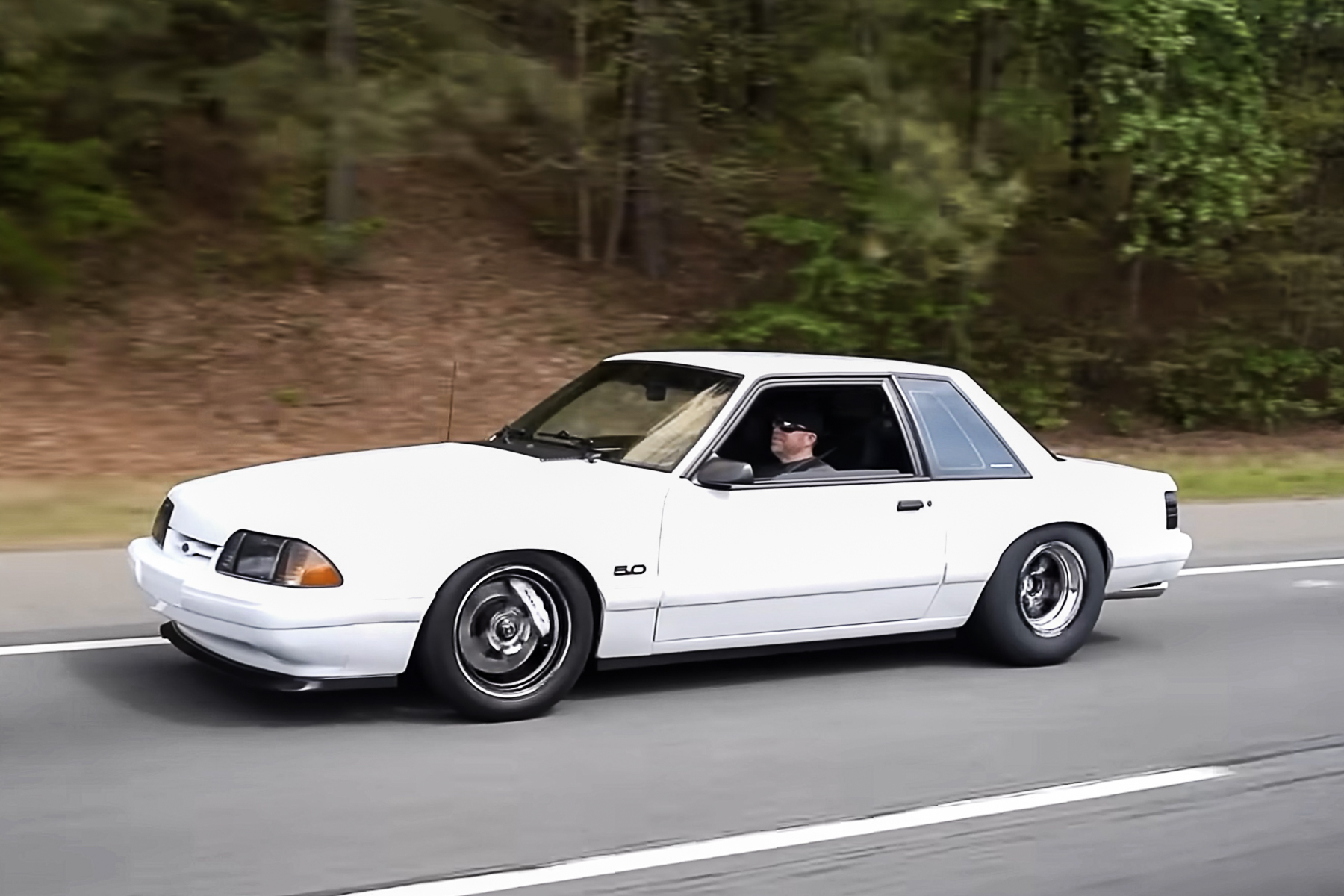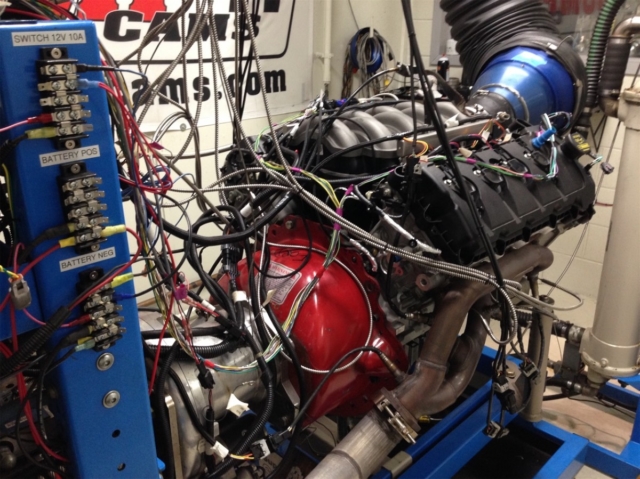
Thanks to FAST’s VTC controller for Coyote engines you now longer have to lock out the cam phasers and give up low- and midrange power. (Photo Credit: FAST)
If you aren’t familiar with the Twin Independent Variable Cam Timing system employed by modern Ford engines—including the Coyote 5.0—it allows the Blue Oval to create more efficient, better-performing engines by advancing and retarding the camshafts on the fly. Now thanks to the clever crew at FAST, tuners using their EFI systems can harness that power.
For reference, the Ford EFI system references up to 15 different tables of data to independently move the camshafts. This helps improve performance and efficiency based on the rpm, load, etc. Ford’s TiVCT system can swing the cams as much a 50 degrees of crankshaft movement in just .02 of a second. For more on how this flavor of cam control works, you can reference the video below.
The Coyote’s four movable cams need to be dealt with when installing an aftermarket fuel injection system.—Ron Wiggins, FAST
“The Coyote’s four movable cams need to be dealt with when installing an aftermarket fuel injection system,” Ron Wiggins, Applications Engineer at FAST told us. “The VTC module gives FAST customers a way to do that without requiring them to open up the engine to install mechanical locking devices. Avoiding the locking devices also means they don’t have to accept the compromises associated with choosing a fixed position for the cams.”
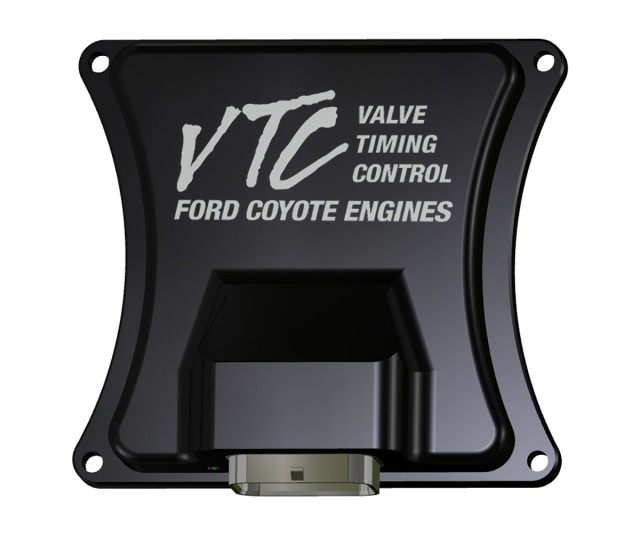
The FAST’s Valve Timing Control Module allows an XFI system to control the position of all four camshafts, with independent adjustment of the intake and exhaust cam position versus rpm and load. (Photo Credit: FAST)
By installing the FAST VCT controller, tuners can now swing the cams up to 45 degrees to squeeze out power throughout the rpm range.
With control over the cams, you don’t have to trade low-end power for high-end power or vice versa.—Ron Wiggins, FAST
Ron and the FAST team put the controller through an array of dyno testing to prove out its efficacy in controlling the cams. They also used that time to get an idea what sort of cam timing the Coyote engine responds to.
The FAST Valve Timing Control Module For Ford Coyote Engines is a plug-and-play proposition for both the FAST XFI Sportsman EFI systems and XIM Ignition modules.
“Being able to move the cams definitely makes a significant difference. For example, in one test, we left everything else the same and only varied intake cam position,” Ron said. “We found intake cam positions that gave good power at different points in the rpm range. Then we compared power with the intake cams moving through those positions (see black traces on the graph below) versus power with them fixed in place as if they were physically locked.”
Of course, in FAST’s testing Ron and company didn’t spend the time tweaking the cam timing for maximum performance the way a tuner will on their own cars or a customer’s cars.
“If exhaust cam position, ignition timing, etc. were optimized along with intake cam position, the differences between moving and fixed cams would likely be even more pronounced,” he explained.
Fortunately owners of Coyote-powered machines that control their engines with FAST EFI systems will be able to explore all the potential of tuning the TiVCT system to squeeze out all that extra performance. Better yet, users can just plug the new controller into a FAST XFI unit and start tweaking the timing via its companion C-com software.
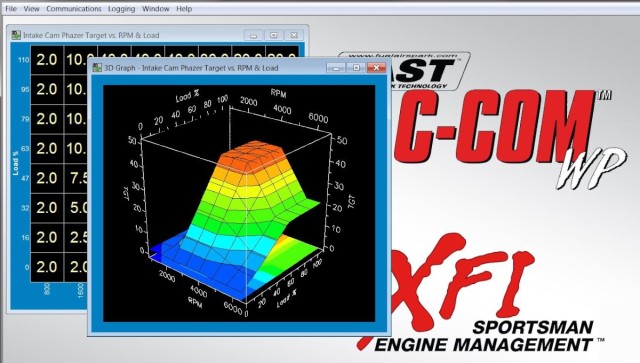
Controlling the cam phasing within the FAST C-Com software is pretty straight-forward. There are just two three-dimensional tables—one for the intake cams and one for the exhaust cams—that plot cam position versus rpm and load. (Photo Credit: FAST)
“Normally, the FAST XIM ignition module would connect to the crank sensor and one of the cam sensors on the engine. When the VTC module is used, it goes between the engine and the XIM,” Ron said. “The VTC module connects to the crank sensor, the cam sensors and the solenoids. It outputs crank and cam signals to the XIM. It also connects to the FAST XFI Sportsman ECU for CAN communication.”
So, just plug the FAST VTC box in series, fire up your C-com software and you are ready to have full control of all four Coyote cams. To learn more, visit the FAST site here.
Holding the intake cams in a position that gave good high-end power sacrificed approximately 30 lb-ft at 3,000 rpm (see red traces), while holding the intake cams in a position that gave good low-end power sacrificed approximately 45 horsepower at 6,400 rpm (see blue traces).” Ron explained. “Then we compared power with the intake cams moving through those positions (see black traces) versus power with them fixed in place as if they were physically locked.” (Photo Credit: FAST)




